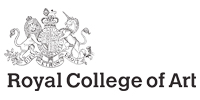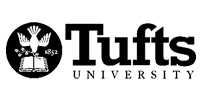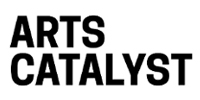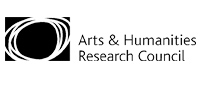The project
With this platform we're focussing on the biomaterial reverse engineered silk — a material that is not rejected by the body, but is instead fully absorbed by human tissue. Silk is a biodegradable polymer material that, once it's reverse engineered, can be fabricated into different shapes — clear sheets, tubes, spheres, foams, solids and more. In connection with electronics, it can turn the human body into a receptive digital platform. We feel such capacity and complexity requires critical discourse with the public and invite you to become part of it.
Why are we doing this?
This platform invites critical thought around biotechnology with the intent to increase variety and diversity of participation, imagination and the exchange of knowledge. Since scientists have created methods to reverse engineer silk, we now have the potential to combine this biological medium with digital technology to act as a biodigital gateway into human bodies. This recent technology is powerful and complex and requires more experimental dialogues between scientists and non-scientists to make informed and transparent decisions that actively influence the future of body interfaces.
Features
Inspired by the polymorphic capacity of silk, we found resonance in the work of the Russian philosopher, critic and semiotician Mikhail Bakhtin. His notion of polyphonic dialogism — a conversation with many simultaneous voices — became our mission statement. Not only to understand the multitude of infinite material capacities, but to enable a non-hierarchical platform where scientists and experts from other fields, as well as an interested public, can have a dialogue on the future of silken body interfaces. By including Silken Futures from artists and scientists we invite new members to think through speculative futures that might affect us all.
How can I participate?
We are keen to promote the reciprocity between imagination and science. In order to participate, new members may submit their own Silken Future to begin a cross-disciplinary dialogue. For more information about the process, either sign up or visit the membership page.
.jpg) Veronica Ranner
Veronica Ranner
Ph.D. Candidate at the Royal College of Art, London
Project roleFounder and creative lead
BioVeronica is a designer, artist, and researcher interested in networked cycles, emerging biotechnologies and bio-fabrication, systems design, and new roles for designers. She currently pursues an AHRC funded PhD at the Royal College of Art, examining the burgeoning domain of the bio-digital — a converging knowledge space where computational thinking meets biological matter.
.jpg) Prof Dr Fiorenzo Omenetto
Prof Dr Fiorenzo Omenetto
Head of SilkLab, Tufts University in Boston, Massachusetts
Project roleScience partner and co-founder
BioFiorenzo G. Omenetto is the Frank C. Doble Professor of Engineering, a Professor of Biomedical Engineering at Tufts University and an adjunct Professor in Physics and Electrical Engineering. Formerly, he was a J. Robert Oppenheimer Fellow at Los Alamos National Laboratories, a Guggenheim Fellow, and currently holds a Fellowship of the Optical Society of America and of the American Physical Society. He proposed and pioneered the use of silk as a material platform for advanced technology.
.jpg) Claudia Lastra
Claudia Lastra
Programme Manager at the Arts Catalyst, London
Project roleArt partner and co-founder
BioClaudia joined Arts Catalyst in February 2012 as Coordinator and became Programme Manager in April 2015. She has project managed several independent educational projects and exhibitions at FACT (Foundation for Art and Creative Technology), The Bluecoat Gallery, A Foundation, Liverpool and Nordic Intercultural Events. Her background is in Fine Art and she has also completed an MA in Material and Visual Culture in Anthropology at UCL. At Arts Catalyst, she produces exhibitions and programmes public events, and also manages the operational aspects of the organisation.
.jpg) Dr Derek Huntley
Dr Derek Huntley
Senior Teaching Fellow at the Faculty of Natural Sciences, Department of Life Sciences, Imperial College, London
Project roleScientific advisor
BioDerek is a Senior Teaching Fellow at Imperial College. He has a degree in Biology and a PhD in Computing, developing genomic annotation software. He worked for 13 years with the Bioinformatics Support Service at Imperial providing college wide collaborative bioinformatics support, particularly in genomic data analysis and annotation. He currently teaches in the Department of Life Sciences, focusing on bioinformatics and genetics/genomics.
- Co-founder and artistic director
- at Furtherfield Gallery, London.
- Cooperator to the Living Assemblies
- workshop, 2015.
- Product designer, École Boulle,
- Paris.
- Intern with Veronica Ranner, Jul- Sep 2015.
- Designers and research assistants,
- Zurich University of the Arts
- Contributor to the Living
- Assemblies workshop, 2015.
- Science writer and communities
- editor at New Scientist, London.
- Contributor to the Living
- Assemblies workshop, 2015.
- Innovator, inventor, scientist, artist
- and director of the Universal
- Research Institute in Zagreb, Croatia.
- Contributor to the Living Assemblies
- workshop, 2015.
- Veronica Ranner is a designer, artist, and researcher interested in emerging biotechnologies and bio-fabrication, systems design, and new roles for designers.
- xyz
- Visual Communication student at the Royal College of Art (2015-17), freelancer and part of the student led forum Red Tape.






